Ahrefs started out back in 2011 as an SEO tool focussed on backlink analysis. Today it is used not only for backlink intelligence but also for SEO audits, content marketing analysis and link prospecting. We have written this guide on how to use the tool to get the most out of it.
This mighty statement appears on their site: “the crawler processes up to 6 billion pages a day. Hard to believe – it is only three times less than what Googlebot does!” Sheesh…
Who is Ahrefs Best for?
Due to the amount of information available and the functionality on offer, Ahrefs is best suited to people who will be using it most days:
- SEO agencies/digital marketing agencies
- In-house digital marketing teams
- Content marketing teams
For people with a casual interest in analysing domains, there are other tools more suited to a lower budget.
How Much Will Ahrefs Cost?
We cannot deny that Ahrefs is not cheap. There is a freemium pricing level that is well worth the investment (!) as a means to assess the functionality on offer.
Subscription prices start from $79 per month for individual users and up to $399 . Agency licences start from $499 per month (3 users) and rise to $2,500 per month for 25 users.
To see what you get for your money, it’s worth looking at their Pricing & Plans page. Work out what you believe you will get out of the tool and how frequently you’ll use it. At Koozai, we are fully paid Ahrefs customers so this post contains no affiliate links. We use a number of other tools (see the boss, Sam Noble’s ultimate write up of Kerboo over on State of Digital) because as impressive as a tool can be, it’s dangerous to put all your eggs in one basket and make key business decisions without verifying data collected by a third-party tool.
No matter how good you think the tool is.
When Should I Use Ahrefs?
Ahrefs started off as a backlink analysis tool, but over time the team have been able to make use of the massive data set they have acquired to provide other means of analysing the data. So now you can analyse your backlinks, review keyword ranking positions, keyword research and content analysis.
How Do I Actually Use Ahrefs?
To get to grips with what is on offer, a guided tour will help highlight the functionality available to you.
Metrics
Once you have successfully logged in, you will meet your dashboard. You can set up ongoing projects whereby domains you specify are monitored for changes in the Ahrefs set of metrics .

Domain Health is an Ahrefs score that takes into account conformance to SEO aspects such as accessibility, crawlability and metadata violations.
URL Rating works as a proxy to something like Moz’s Page Authority or Google’s PageRank tool bar grader. As with these types of metrics, these tools do not represent an official score but a benchmark, so should be used as a guide only. Given the large amount of data available, this should be fairly accurate, though it should not be confused with a ‘Google SEO Score’. What is useful about URL Rating is that it provides a comparison based on 30/60/90/180-day intervals and colour codes green/red depending on how well the current domain compares.
Similarly to URL Rating, Domain Rating shows the Ahrefs’ assessment of your domain. As I mentioned above, be careful not to put all your eggs in one tool’s score.
The Back Links and Referring Domains data show any gains or losses in backlinks or referring domains there have been over the previous four weeks.
Organic Keywords will show you the number of keywords your domain is ranking for. In our case we have the amounts for the UK and US.
Positions Tracker
In the Positions Tracker tab, you can review keyword ranking performance. Once on the dashboard, you’ll see a summary of all keyword movements and changes in ranking groups, for instance positions 1-3 and 4-10.
Click through and Ahrefs will give you a keyword specific report. Here you can set updates to ‘weekly’ or ‘daily’.
Desktop and mobile positions, as well as the top-ranking page for the keyword, are reported on. As with most Ahrefs reports, this is exportable if you prefer to use Excel to manipulate the data.
Content Alerts
Content Alerts are covered below in the Content Explorer section. This area of the dashboard allows you to view any alerts you’ve set up for a subject and lets you set up more.
Disavow Links
Upload your pre-existing disavow file here and add to it as you navigate the Site Explorer tool and identify domains you wish to add to your disavow file. Saves on the cut and paste.
Email Notifications
This is a very useful and simple interface that allows you to set up email notifications for the following:
- Domain Health
- New/Lost Backlinks
- Positions Tracker
You can also specify what issues (All/Critical/Non-Critical) and which backlinks (All/New/Lost) you wish to be notified of each day, week or month.

A Tour of the Ahrefs Toolkit
After you’ve familiarised yourself with the Ahrefs dashboard, you can dive into the Ahrefs toolkit.
Site Explorer
Essentially this is the original Ahrefs backlink checker tool. Add a domain to the Site Explorer bar and stand back.

The resulting page will feel like an assault on the senses with what seems like 100 data points, line graphs, bar charts and doughnut charts.
Let’s break it down a tad.
Your headlines are the Ahrefs Global Rank, Domain and URL Rating scores as well as the total number of backlinks, referring domains and major social channel shares for the URL.

As with most self-respecting backlink checkers, you get a summary of backlinks and referring domains found, the number of pages crawled, referring IP addresses and the number of governmental and educational links.
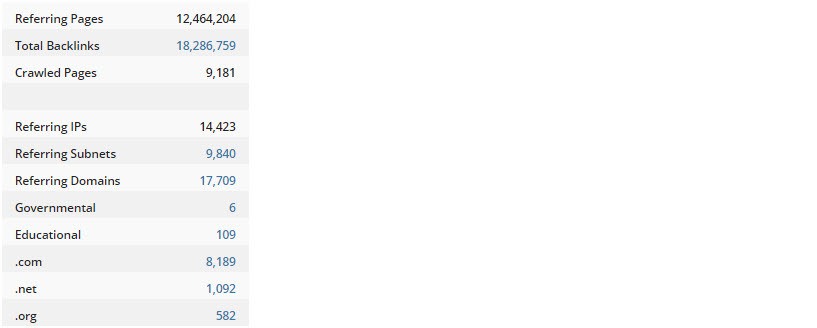
The Ahrefs Rank graph shows the Ahrefs score over time and has a great function that allows you to compare domains very quickly.

The comparison tool lets you compare six domains straight from the interface, plotting each domain on the graph and then providing a view of performance with four different time intervals.

From here you can also use the Explore Ahrefs Top which shows you the top one million domains by Ahrefs’ rank in their index. I see this largely as a curiosity rather than something critical to SEO workflow. That said, plus.google.com is beating out google.com currently…
The Referring Pages data visualisation puts that massive index to good use by plotting new and lost link quantities at page and domain level.
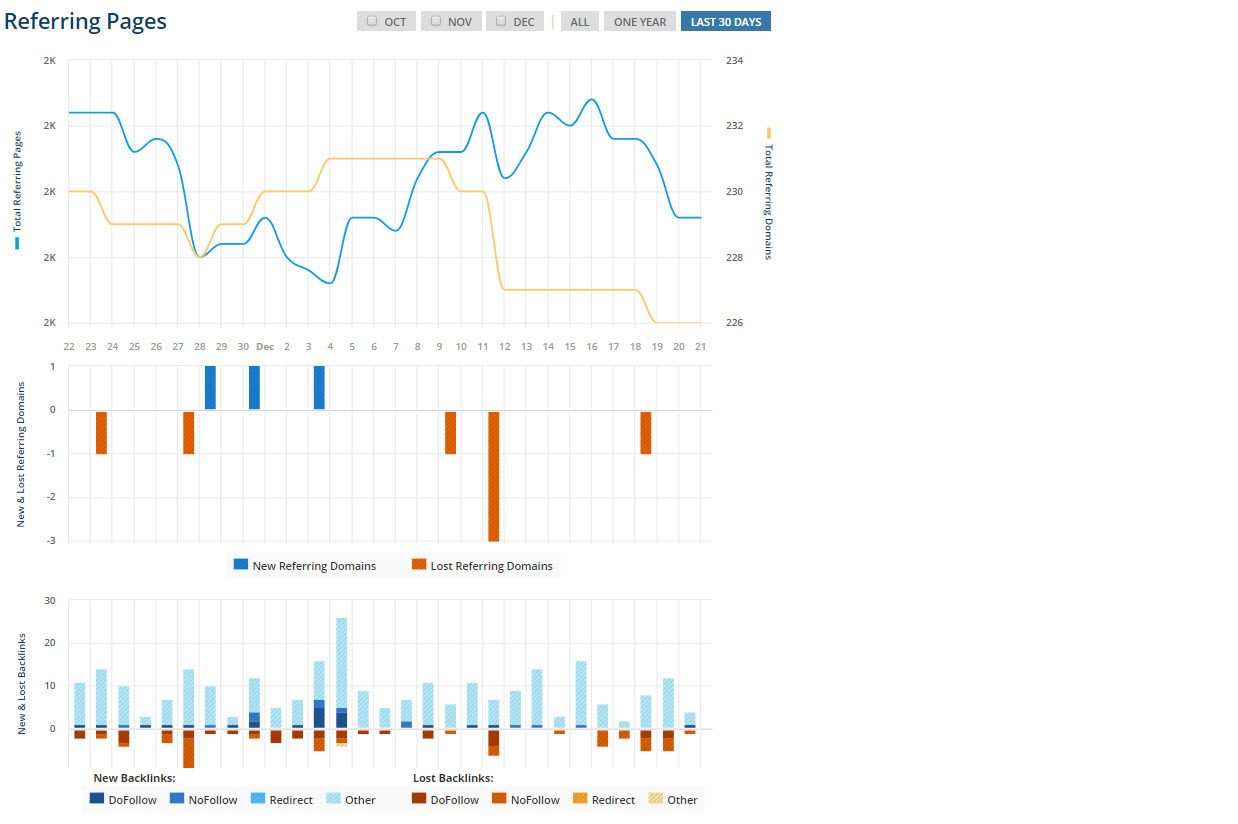
Site Explorer then expands the top-level analysis of the domain by pulling in a Top Content widget that highlights your top ten most popular content pieces by referring domains and highlights share totals on the following platforms:
- Google+
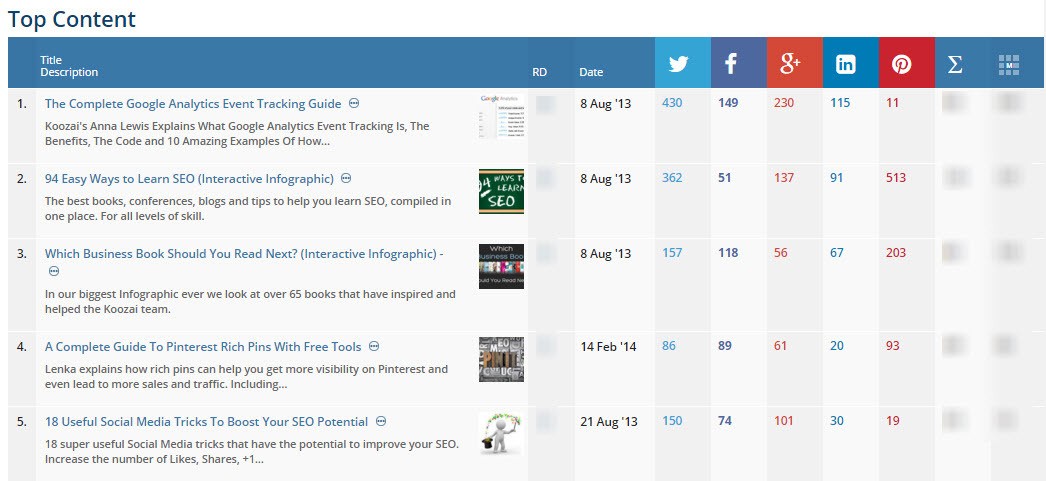
I like the CTLDs Distribution map for its interactivity, which allows you to very quickly click and see the number of referring CTLDs from a particular country and its share of traffic. What would be even cooler would be to get city level data as the cursor gives you different points when you hover over Australia’s landmass, but the stats remain at country level.
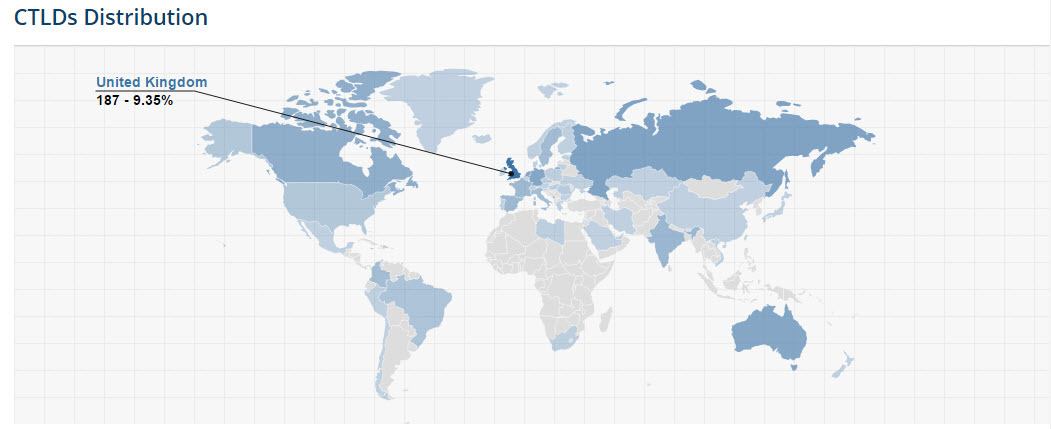
The Anchors Cloud won’t tell you too much and it’s a shame that it doesn’t link through the Anchors report. However, you can navigate to it easily enough from the left-hand side bar, which might be worth making a floating one as the depth of the page takes this out of view by the time you’ve reached the Top Content section.
The same can be said of the Anchor Phrases and Anchor Terms, which show the contribution of keywords in bar chart form at referring page and domain quantity levels.
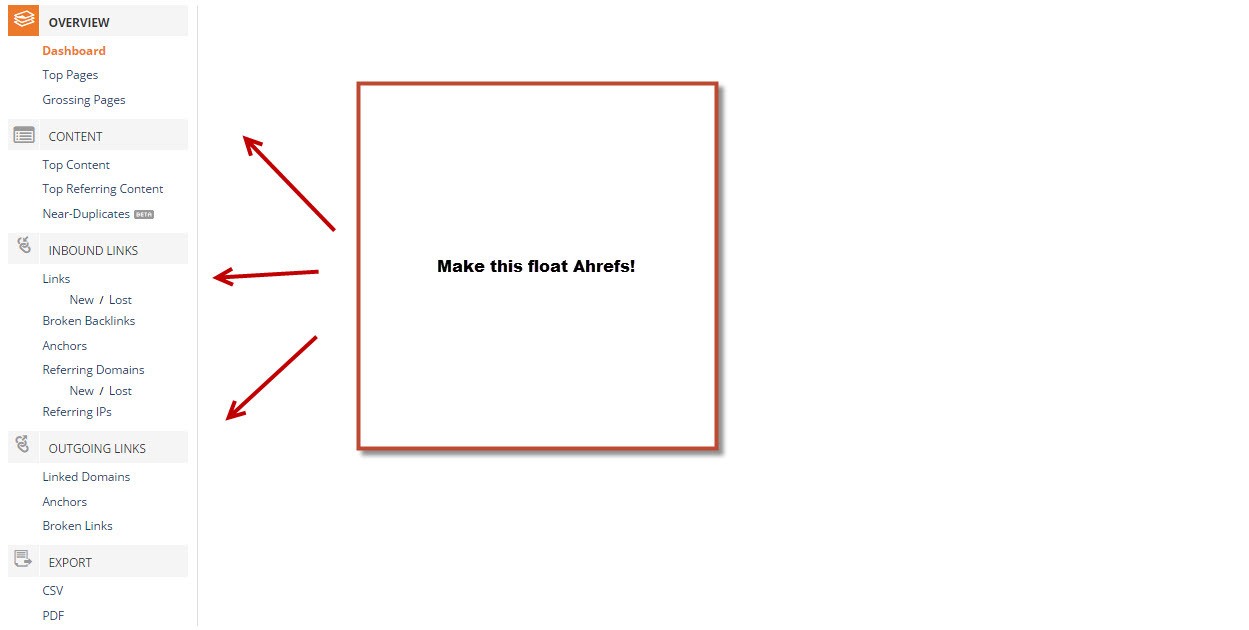
Ultimately these niggles don’t prevent a user from using Site Explorer and finding what’s needed to paint the backlink profile picture for a domain.
Link Intersect
This is a clever little bit of kit. With the Link Intersect tool, you can plug in a set of sites (up to 10) and Ahrefs will return the domains that are linking to all of the sites submitted.
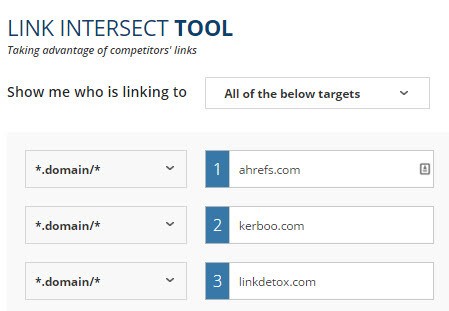
Do this for a number of your competitors to see where you should be getting some exposure. As with most reports, this is exportable.
Batch Analysis
The Quick Batch Analysis function is really useful for identifying competitors and linking opportunities.
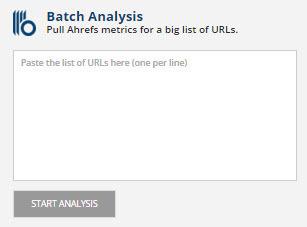
Simply drop a list of URLs into the box and Ahrefs will return the following metrics for you to analyse:
- Number of backlinks
- Number of referring domains
- Social metrics
- Ahrefs URL and domain level score
This can be exported for more in-depth analysis. My tip would be to use URLProfiler’s free Simple SERP Scraper to scrape the SERPs for a target keyword and then drop the URLs into Ahref’s Batch Analysis to get a clearer picture on the pages and domains ranking for your keyword. As I mentioned previously, the results paint a clearer picture of who your online competitors are and potential linking opportunities.
Crawl Report
If you have set up a Dashboard for a site, you can gain access to a Crawl Report, which provides an analysis of your domain that lends itself neatly to SEO.

I’m not sure of the reasoning or whether there’s a limitation within the functionality, but this report would be very useful as part of the suite of reports that don’t require a domain to be set up as a Dashboard property.
The Crawl Report lets you review SEO elements within the Ahrefs interface. If you’re aware of Screaming Frog and its SEO capabilities, the Ahrefs functionality will seem limited. It does, however, give you a good overview of some of the key SEO elements to optimise.
With the ever useful Export function you can extract the following:
- Response codes
- Duplicate content
- Thin content (less than 50 words)
- Title tags
- Meta descriptions
- Meta keywords – useful if you’re looking at a competitor’s site for keyword ideas. And if they still use the tag…
- H1 tags and H2 – duplicates, missing, lengthy and multiple
- URLs – non ASCII, where underscores are used, canonical, dynamic and lengthy URLs
- Internal and external links
By using this for your site or that of a competitor, you can assess the accessibility of your site’s content, internal duplicate content levels and metadata optimisation.
There is plenty of ground that can be covered using this type of data.
Domain Comparison
Ahrefs is in its element when making use of its index in a backlink analysis context.
To get to the Domain Comparison tool, click on Site Explorer from the main navigation and put two domains into the Domain Comparison tool:
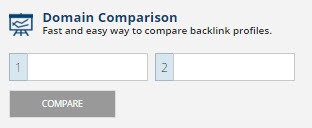
Once you click Compare you’ll be able to add more domains (up to 5) to be compared.

I like how the data are organised more clearly than in other tools. The data returned are largely the same as most other backlink analysis tools – Ahrefs’ worth lies in the massive index that provides the data. Strangely, the Domain Comparison tool doesn’t have an export function, as far as I could see. This would be a useful feature.
Content Explorer
Ahrefs’ Content Explorer tool makes use of the massive data set of pages to help research content by topics and keywords.
Ahrefs offers 3 refinements of a query, allowing you to search for content pieces in the following ways:
- Everywhere – This means a query will search both the title and on-page content.
- In title – If you’re testing headline out, this function will give insight into the types of pieces using the same headline.
- In content – Use this to find content pieces using your keyword or topic only in the on-page content. This is excellent for researching headlines and also format types.
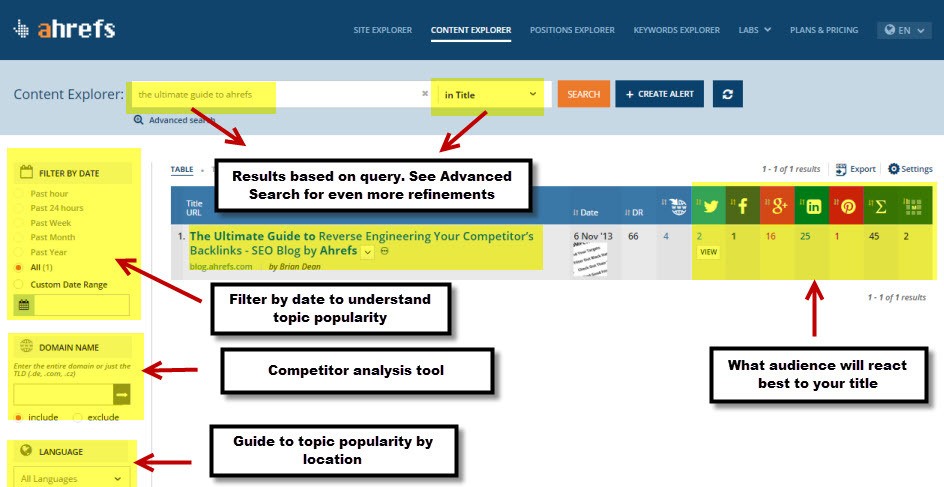
On top of this, you can filter results based on a date range, language, and you can include or exclude a specific domain. Dig deeper and use the advanced search functions to produce a highly specific search result. Industry standards like site:domain as well as specifying the exact string using “” work but you can refine your search even further.
‘Fuzziness’ (which is allows misspells and pluralised terms to be targeted. The ‘Proximity’ search function is great if you’re looking at a search term that’s variable by nature but contains two constant words by specifying a maximum number of words proximity between the two keywords you specify.
For instance, I could perform a search and get “Koozai has managed SEO projects for 11 years” by using [“Koozai SEO”~4].
The results of a query can be formatted as a Table (as in the image above) or as Tiles containing the same information – this is a good way of transmitting the results in a more visual manner.
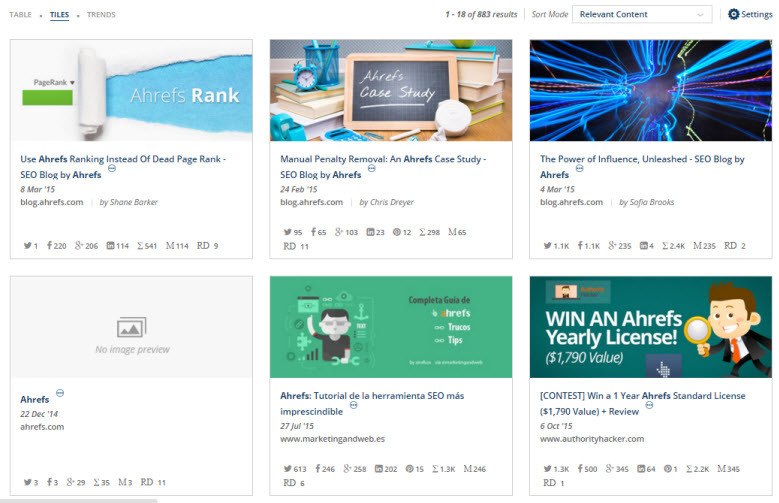
Another neat feature to look at – especially for a seasonal topic – is the Trends feature. Here Ahrefs breaks down the number of documents it has found in its index related to your query by amount and then by month for a default of 24 months. This can be refined through the pre-set date filters or the custom date picker.
The extra neat function is that you can see – within your date interval (day or month) – the number of pieces amongst the total that have tripped the popularity scores, specifically ‘Medium’ or ‘High’. My assumption here is that the ‘Medium’ or ‘High’ score is applied as a score relative to the other documents found in the time intervals.
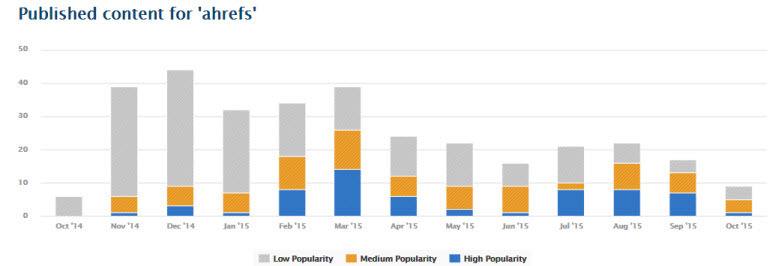
Once you’ve settled on the perfect query, you can create an alert with one click of – yes, just one click of – the “Create Alert” button. Managed from your “Content Alerts” dashboard, “My Alerts” can be paused, edited or deleted from here.

Positions Explorer
Ahrefs Positions Explorer provides a view of a domain’s organic and paid keyword strengths.

Once a domain is submitted, a detailed, top-level view of the domain’s organic and paid keyword presence is returned. Having used SEMrush prior to Ahrefs there is some familiarity here.
The organic and paid keywords summary stats are clickable and reveal a hefty amount of detail.

Once you’ve clicked through, you’ll get a lovely exportable table full of juicy usefulness. Just think of what you can do with this little lot:
- Keyword
- Ranking position
- Search volume (Ahrefs data so worth cross-referencing)
- Ranking URL
- Estimated traffic (again Ahrefs data so worth cross-referencing)
- Results for the keyword
- Freshness of the data
On top of that, from within the console you can filter by position groupings, search volume and phrase length. This makes for a very useful tool for keyword research as well as competitor analysis.
When you return to the Position Explorer summary for the domain you previously submitted, you can click on the Paid Keywords to get a similar breakdown but with an added Ad column that previews the advert for the keyword. This is a nifty competitor analysis tool and ad text research tool.
Back on the Position Explorer summary for your domain, the page’s content is split into Organic Research and Paid Research.
Here Ahrefs will show you the competitors it finds for organic and paid results, preview your ads and more:
- Organic traffic over time (Ahrefs data so worth cross-referencing)
- Number of ranking keywords (Ahrefs data so worth cross-referencing)
- A positions heat map
- Top 5 organic keywords – links through to the expanded data set mentioned above
- Top 5 pages by # of keywords the page ranks for – as above, links through to the expanded data set mentioned above
Keywords Explorer

Ahrefs’ keyword research tool, Keyword Explorer, acts as a discovery tool, giving the user an estimated search volume for the US and UK that is exportable by CSV.
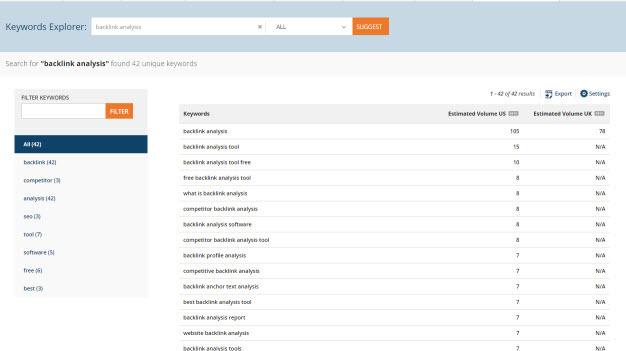
A query can be filtered with a simple search function. It also analyses the results by looking for trends and highlights any commonly used terms that may hold some relevance for the keyword research you’re carrying out.
This is a nice feature that you may use whilst in the Ahrefs interface for a look at a term – but there are better keyword research tools out there.
Conclusion
So there we have it – Ahrefs have evolved since their backlink analysis beginning by building some useful tools based on that massive index they’ve built over the years.
There’s no doubt that Ahrefs have invested a lot of time into building a suite of tools useful to digital marketers. It’s fair to say, though, that their real strength lies in what that massive (and ever growing) index can provide.

Leave a Reply